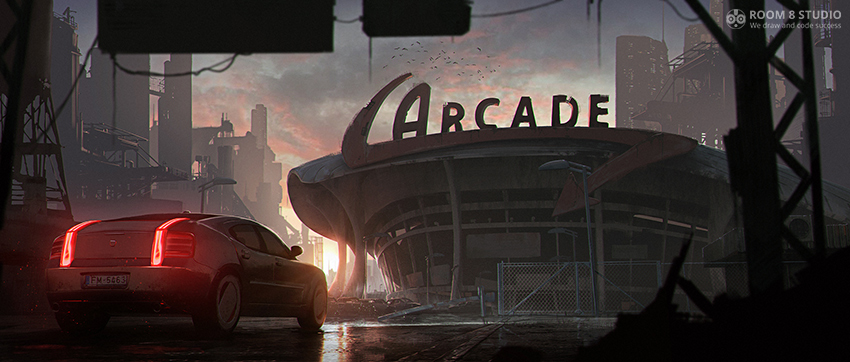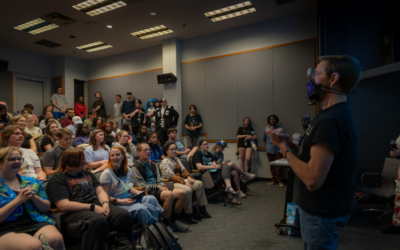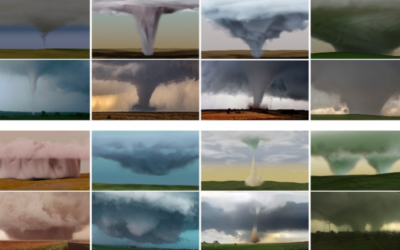Arcade Machines Environment Concept Art: courtesy of Room 8 Studio.
The International Resources Committee opens 2019 exploring the state of the computer graphics (CG) industry in Eastern Europe (EE) through the expertise of three professionals from the region: Vladimir Koylazov, CTO at Chaos Group, of Bulgaria, and one of the original developers of V-Ray; Ondra Karlík, founding partner and head of development at Render Legion — part of the Chaos Group family — of Czech Republic; and, Maria Klymenko, head of the art division at Room 8 Studio, of Ukraine.
Koylazoy believes that Eastern Europe, and Bulgaria in particular, has a filmmaking history, albeit of small-scale productions. “This is changing and we are happy to see some high-profile work trickle to this part of the world,” he noted.
Over the last several years, many Eastern European countries — such as Czech Republic, Hungary, Poland, Estonia, and Lithuania, to name a few — have introduced generous rebates and shooting incentives, ranging from 20 to 30 percent. This growth in film production has lead to a growth in VFX across both film and TV. Outside of VFX, other areas of CG in the region have also seen steady growth. Koylazov explained that there are plenty of opportunities across all of CG, including software development, architectural visualization, and game development.
“Eastern Europe has become a hub for software development in recent years and many large international companies have opened research and development centers here, which makes the job landscape very competitive,” said Koylazov.
Speaking of the software development undertaken on V-Ray, he also shared: “Our workload has been steadily increasing. Partly because we work on new products, but also because we have accumulated quite a large customer base that we need to support and we continue to improve our existing products.”
Karlík, agreeing with Koylazov, highlighted Render Legion/Corona and VRgineers, both out of Prague, and new projects at Škoda Autosome as some of the software development and CG tech companies that are popping up in the region.
Research and Academia
Let’s not forget about academia, Karlík said, “I cannot speak for all of Central Europe, but I can see that Prague is becoming an important hub of education and research in visual computing technology — that is, both graphics and computer vision. I see it at the university where I work. I’m getting more and more international students wanting to join my group based on our results and the connection with Corona.”
Karlík continued, “There are two major university groups specializing in graphics in Prague itself: our group at Charles University and at Czech Technical University. Furthermore, there are some outstanding research groups in image processing at the Czech Academy of Sciences, computer vision at Czech Technical University, and autonomous robotics at the recently opened CIIRC Research Institute. So there’s a lot of talent around here in CG [research].”
Game Development
Despite increased involvement in research and software development, Karlik still believes that much of the region’s business still revolves around game development. This belief is supported by Maria Klymenko, who shared, “CG in Eastern Europe got its real boost after the rise of video game production. The industry is booming and growing exponentially, and Eastern Europe, and specifically Ukraine, gets more and more attention.”
Further, there are many well-established game development companies in the region. In Ukraine alone offices exist for Ubisoft, Gameloft, Wargaming, Crytek, Plarium and Playtika.
“Current demand for quality game art is really huge. At Room 8, photorealistic game art is booked a couple of months ahead. And, for some narrow disciplines, a year ahead. This level of demand helps studios grow fast,” shared Klymenko.
Current CG Trends
Koylazoy believes that trends in the region are mostly following the rest of the world and emphasized a focus on making photorealistic pipelines more efficient. This trend involves both making the rendering process itself faster — through software and hardware advances — and simplifying workflows so that artists can get to the desired result more quickly. He shared that to date, “rendering has been a very technical process that requires artists to understand in great detail how a software works.” Today, the preference is moving toward hiding all of the complexity with artist friendly controls.
A second trend is real-time rendering through dedicated real-time engines, or, in some cases, through existing gaming engines. “Traditionally, these real-time solutions have been based on rasterization. With recent hardware advances, it is becoming possible to ray-trace everything in real time. This simplifies the architecture of a real-time renderer a lot,” noted Koylazov.
The final trend Koylazov spoke to was making software “smarter.” He shared that some of the most striking examples of this “have been applications of deep neural networks to tasks like noise removal or image upscaling.” Machine-learning approaches are also being applied to the rendering process, helping the software to learn about the particular scene and image being rendered in order to adjust its sampling algorithms to improve efficiency.
Karlík expands on this trend of making software smarter: “Our group at Charles University was among the first to show how machine-learning techniques can be applied to speed up rendering. Some of this technology now powers Corona, and more is coming soon. We plan to follow up on this trend and look for new ways in which the new AI/learning techniques can improve not just rendering, but also content creation. There’s also a lot of AI done in the computer vision and autonomous robotics groups in Prague.”
With regard to art in game development, Klymenko shared that “around five years ago, Eastern Europe had a specific image for art creation.” Most art requests were to create assets by specs. Now, this has evolved to develop a mature market with huge accumulated expertise and the best software, tools, and pipelines. Because of this, games studios have become more trusting of the region and creators have seen an increase in projects for which EE teams take over the entire art component of a game, from art direction and concept art through to UI, 3D, animation, and VFX, even sometimes covering promotional materials for marketing.
She sums this idea up by saying, “Overall, we observe a shift to more creative disciplines, which is definitely good for the economy, education, and talent nurturing. The growth of indie game development in Ukraine is massive and a lot of talented artists thrive with some indie teams to create art for new arising games.”
In sum, growth is steady and not set to slow down within Eastern Europe’s CG market. Not only is the amount of work increasing, but the type of work is beginning to be of a higher profile. We cannot wait to see what’s next.
Read more regional snapshots from the ACM SIGGRAPH International Resources Committee.



